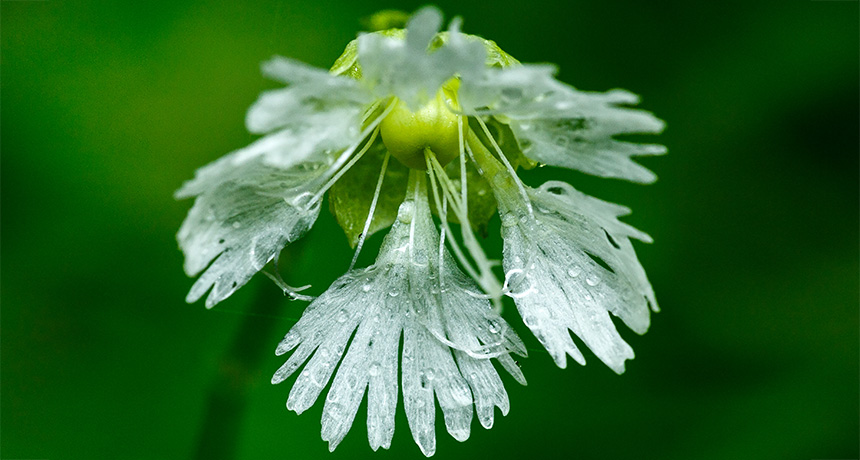
PORTLAND, Ore. — Petals of wildflowers called starry campions may be a pretty little battleground for a sexual skirmish between the plant’s male and female parts.
As is common in flowers, each Silene stellata bloom forms both male and female sex organs. After measuring petal variation between plants and tracking parenthood of seeds, Juannan Zhou suspected a sexual tug-of-war.
Flowers with greater male success in spreading pollen and siring seeds across a flower patch tended toward longer and narrower petals, Zhou reported June 26 at the Evolution 2017 meeting. Yet flowers that did especially well by their female organs, maturing abundant seeds in their own ovaries, tended toward wider and shorter petals.
Zhou, of the University of Maryland in College Park, pieced together the story while working in a fenced-in plot of wild campions at Mountain Lake Biological Station in southwestern Virginia. During two summers, he tracked floral details and collected seeds. He sprouted almost 2,400 seedlings and for each genetically worked out which of 227 fenced-in adults had been the father.
If a conflict smolders between what’s best for male versus female functions, parental blossom trends that went along with greater fatherhood should tilt in the opposite direction from blossom trends linked with greater motherhood. Some traits such as number of fringe tassels showed no signs of conflict, but petal dimensions did.
Zhou suggests that the contrary trends might arise from the sexes’ opposite interests in visits from one of its pollinating moths, the mottled gray-brown Hadena ectypa. These moths do much of the pollen carrying early in midsummer. One mothload of pollen typically fertilizes all the eggs a female has, so from the motherhood perspective, once is enough. More than once means more risk for little benefit, because female moths leave an unwanted gift behind.
Besides sucking nectar, a H. ectypa often sticks her rear into the cup of a flower and with a wiggle, lays an egg or two. When eggs hatch, the tiny caterpillars chew their way into the flower ovary and start feeding on the plant’s own seeds. Caterpillars eventually grow too long and fat to fit inside blooms. Certain petal shapes, Zhou speculates, might be more attractive to moths, or perhaps more discouraging for the fattest, most destructive caterpillars to invade.
From the male point of view, the loss of the home flower’s seeds could be more than recouped by repeated moth visits to pick up more pollen to spread to other flowers. More moths could mean many more offspring.
Sexual conflicts show up elsewhere in nature, such as in the compounds that fruit flies use to dope their sperm. After a jolt of these extras, females tend to put more resources into eggs and offspring. Never mind that it shortens a female’s life. Data on sexual conflicts from plants are much rarer, says evolutionary nary ecologist Locke Rowe of the University of Toronto. He welcomes the starry campion work also because the plants are hermaphrodites, a lifestyle uncommon in conflict studies.
Hi! I am a robot. I just upvoted you! I found similar content that readers might be interested in:
https://www.sciencenews.org/article/hermaphrodite-wildflower-has-its-own-battle-sexes
Downvoting a post can decrease pending rewards and make it less visible. Common reasons:
Submit